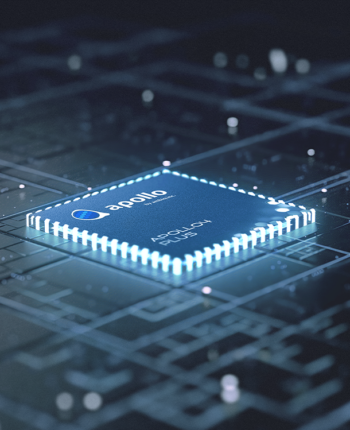Ambiq apollo sdk - An Overview
Ambiq apollo sdk - An Overview
Blog Article

SWO interfaces usually are not commonly employed by production applications, so power-optimizing SWO is especially so that any power measurements taken in the course of development are nearer to All those of the deployed technique.
Our models are skilled using publicly obtainable datasets, Every having distinctive licensing constraints and necessities. A lot of of these datasets are low cost or simply absolutely free to utilize for non-commercial applications for example development and analysis, but prohibit business use.
Inside a paper published Initially on the year, Timnit Gebru and her colleagues highlighted a number of unaddressed problems with GPT-three-type models: “We inquire whether or not more than enough imagined has been place into the prospective threats affiliated with producing them and methods to mitigate these threats,” they wrote.
SleepKit supplies a model factory that means that you can effortlessly make and teach tailored models. The model factory involves a number of present day networks well matched for productive, serious-time edge applications. Every model architecture exposes a variety of high-degree parameters that could be used to personalize the network for your provided software.
GANs presently deliver the sharpest photographs but they are tougher to improve on account of unstable training dynamics. PixelRNNs Have a very quite simple and steady instruction system (softmax reduction) and at this time give the very best log likelihoods (that is definitely, plausibility from the produced details). Nevertheless, These are rather inefficient for the duration of sampling and don’t easily deliver easy lower-dimensional codes
Inference scripts to check the resulting model and conversion scripts that export it into something which could be deployed on Ambiq's hardware platforms.
This is often fascinating—these neural networks are Discovering what the visual earth seems like! These models generally have only about one hundred million parameters, so a network experienced on ImageNet has got to (lossily) compress 200GB of pixel information into 100MB of weights. This incentivizes it to find the most salient features of the data: for example, it'll very likely learn that pixels nearby are prone to hold the similar coloration, or that the world is produced up of horizontal or vertical edges, or blobs of different colours.
Employing essential technologies like AI to tackle the globe’s bigger complications for example climate transform and sustainability is actually a noble task, and an Strength consuming 1.
Both of these networks are thus locked inside of a struggle: the discriminator is attempting to differentiate real images from fake pictures and also the generator is trying to make pictures that make the discriminator think they are serious. Eventually, the generator network is outputting visuals which have been indistinguishable from serious illustrations or photos for that discriminator.
In other words, intelligence must be available through the network many of the solution to the endpoint with the supply of the data. By increasing the on-system compute abilities, we are able to far better unlock actual-time knowledge analytics in IoT endpoints.
As well as building quite shots, we introduce an strategy for semi-supervised Discovering with GANs that requires the discriminator developing an extra output indicating the label of your input. This technique allows us to get point out of the art success on MNIST, SVHN, and CIFAR-10 in options with hardly any labeled examples.
We’re rather excited about generative models at OpenAI, and also have just produced four jobs that advance the point out of the artwork. For every of these contributions we can also be releasing a complex report and supply code.
When it detects speech, it 'wakes up' the search phrase spotter that listens for a particular keyphrase that tells the products that it is getting dealt with. When the keyword is noticed, the remainder of the phrase is decoded through the speech-to-intent. model, which infers the intent from the consumer.
New IoT applications in several industries are producing tons of information, also to extract actionable worth from it, we could no longer depend upon sending all the info back to cloud servers.
Accelerating the Development of Optimized AI Features with Ambiq’s neuralSPOT
Ambiq’s neuralSPOT® is an open-source AI developer-focused SDK designed for our latest Apollo4 Plus system-on-chip (SoC) family. neuralSPOT provides an on-ramp to the rapid development of AI features for our customers’ AI applications and products. Included with neuralSPOT are Ambiq-optimized libraries, tools, and examples to help jumpstart AI-focused applications.
UNDERSTANDING NEURALSPOT VIA THE BASIC TENSORFLOW EXAMPLE
Often, the best way to ramp up on a new software library is through a comprehensive example – this is why neuralSPOt includes basic_tf_stub, an illustrative example that leverages many of neuralSPOT’s features.
In this article, we walk through the example block-by-block, using it as a guide to building AI features using neuralSPOT.
Ambiq's Vice President of Artificial Intelligence, Carlos Morales, went on CNBC Street Signs Asia to discuss the power consumption of AI and trends in endpoint devices.
Since 2010, Ambiq has been a leader in ultra-low power semiconductors that enable endpoint devices with more data-driven and AI-capable features while dropping the energy requirements up to 10X lower. They do this with the patented Subthreshold Power Optimized Technology (SPOT ®) platform.
Computer inferencing is complex, and for endpoint AI to become practical, these devices have to drop from megawatts of power to microwatts. This is where Ambiq has the power to change industries such as healthcare, agriculture, and Industrial IoT.
Ambiq Designs Low-Power for Next Gen Endpoint Devices
Ambiq’s VP of Architecture and Product Planning, Dan Cermak, joins the ipXchange team at CES to discuss how manufacturers can improve their products with ultra-low power. As technology becomes more sophisticated, energy consumption continues to grow. Here Dan outlines how Ambiq stays ahead of the curve by planning for energy requirements 5 years in advance.
Ambiq’s VP of Architecture and Product Planning at Embedded World 2024
Ambiq specializes in ultra-low-power SoC's designed to make intelligent battery-powered endpoint solutions a reality. These days, just about every endpoint device incorporates AI features, including anomaly detection, speech-driven user interfaces, audio Ambiq's apollo4 family event detection and classification, and health monitoring.
Ambiq's ultra low power, high-performance platforms are ideal for implementing this class of AI features, and we at Ambiq are dedicated to making implementation as easy as possible by offering open-source developer-centric toolkits, software libraries, and reference models to accelerate AI feature development.
NEURALSPOT - BECAUSE AI IS HARD ENOUGH
neuralSPOT is an AI developer-focused SDK in the true sense of the word: it includes everything you need to get your AI model onto Ambiq’s platform. You’ll find libraries for talking to sensors, managing SoC peripherals, and controlling power and memory configurations, along with tools for easily debugging your model from your laptop or PC, and examples that tie it all together.
Facebook | Linkedin | Twitter | YouTube